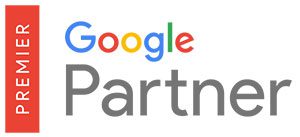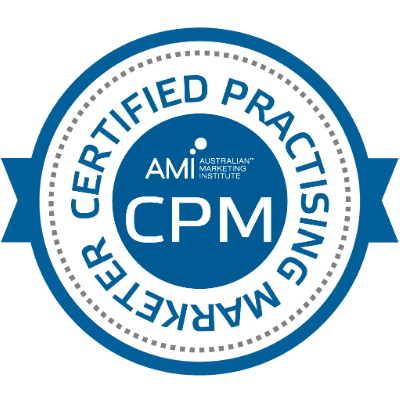The Brief Guide That Makes Creating a Google Ads Strategy Simple
Not all Google Ads are created equal. Here’s the complete yet brief guide that will make it simple for you to get started with a smart Google Ads strategy.
The average internet user sees 4,000 to 10,000 ads every day. About 65% of customers click on pay-per-click (PPC) ads to learn more about interesting brands. These paid ads have a 200% ROI!
By using Google’s PPC advertising platform Google Ads, you can get in front of more customers and boost business.
Otherwise, you’re giving competitors a chance to get ahead of the curve.
Before you start advertising on Google Ads, however, it’s important to have a plan. A sound Google Ads strategy can help you maximize your reach and optimize your ad spend.
Not sure where to start? Keep reading for the Google Ads strategies you need to succeed!
1. Audit Your Website
Before you start creating ads, it’s important to complete a full website audit. After all, consumers will click on your ads to reach your website. What’s the first thing they see?
If your website is old and difficult to navigate, people will leave. When visitors leave without clicking around, it impacts your clickthrough rate. Meanwhile, your bounce rate will start to rise.
Google looks at these metrics when determining your quality score. A low-quality score will impact where your ads rank on Google’s search pages. If you’re not at the top of the first page, you’ll miss a chance to reach customers.
You can improve your website design by keeping user experience design trends in mind.
First, make sure your pages load quickly. You can use Google’s Page Speed Insights to test the current load time.
Make sure your site is secure as well. Do you see “HTTPS” in front of your URL? If not, get an SSL certificate right away.
Next, give your content room to breathe. While space, shorter sentences, and headings can improve readability.
Lastly, make sure your buttons and links work properly. Improving your online content and design will increase your chances of gaining conversions.
Once you develop your campaigns, you’ll need to create designated landing pages to help drive conversions. You’ll use Google Ads conversion tracking to determine which ads lead to on-site conversions.
Go Mobile
People interact with brands twice as often from their mobile devices. Meanwhile, mobile conversion rates are 64% higher than desktop. As you make these changes to your website, make sure you’re optimized for mobile devices, too.
Otherwise, mobile users might struggle to navigate your site. They’ll leave, costing you a conversion!
You can use Google’s Mobile-Friendly Test to make sure your site is ready for mobile visitors.
2. Understand Your Audience
As you use these Google Ads strategies, it’s important to keep your customers in mind.
Who are you trying to reach? What keywords do they use in a Google search? What are they looking for from your product or service?
Take a look at your current customers. Try segmenting your target audience into smaller buyer personas. Then, you can create campaigns with precise targeting in mind.
Separating your customers into their own campaigns will help you personalize your ads. You’ll have an easier time connecting with customers by creating messages that appeal to their needs.
3. Research Target Keywords
Once you know who you’re targeting, you can determine what they’re searching for online.
Your Google Ads strategy will heavily depend on your keyword research. You can use tools such as Google Trends, Keyword Planner, and Ahrefs to get started. Look for keywords with a high search volume and low competition.
Google Ads organizes campaigns into smaller ad groups. Each ad group targets a list of keywords. As you gather your list of keywords, try organizing them with ad groups in mind.
Make sure the keywords are relatable. Otherwise, it could impact your quality score.
You can also use Single Keyword Ad Groups (SKAGs) to organize your ad groups. SKAGs focus on one keyword per group.
Once you determine your keywords, you’ll need to determine the match type you want to use. Otherwise, your ads might appear for irrelevant searches. A negative keyword list can help you avoid wasting ad spend.
4. Set a Budget
As you start developing your Google Ads strategy, it’s important to keep a budget in mind. Otherwise, you could overspend the day your ads go live.
With PPC advertising, you pay each time someone clicks on your ads. The cost per click can vary based on your keywords. More competitive keywords cost more.
Google Ads allows you to set a daily budget for your campaigns. You can work with an experienced PPC management company to determine your ideal budget.
5. Create Compelling Ads
Google paid ads can help increase brand awareness by up to 80%. Meanwhile, traffic through PPC advertising yields 50% more conversions than organic advertising. If you want to boost brand awareness and conversions, however, you’ll first need eye-catching ads.
You can create search (text) ads and display ads to appeal to your target audience.
When developing your ads, make sure they’re:
- Relevant for your target keywords
- Include your target keywords
- Differentiate you from competitors
- Match what appears on your landing pages
You can A/B test different ads to determine which ones drive conversions.
Consider utilizing video and remarketing ads as well. Video ads are a type of display ad that will appear on other websites.
Remarketing ads are also display ads. They’ll appear in front of people who previously visited your website. These ads give you a second chance to generate leads!
6. Add Extensions
You can also include ad extensions in your Google Ads strategy to increase clicks and conversions.
Ad extensions help your ads stand out from other ads on Google. You can create extensions that display your products/services, a clickable phone number, or links on your website.
7. Keep Optimizing
As you use these Google Ads strategies, it’s important to return to your campaigns every few days. Reviewing the data will help you recognize areas where you can improve.
Which campaigns have the highest conversion rates? Which ones are failing to generate clicks?
You might need to adjust your keywords, targeting parameters, or ad language.
Making these improvements can help you avoid wasted spend and boost your ROI.
A Simple Start: 7 Tips for an Effective, First-Time Google Ads Strategy
Don’t fall behind the competition this year. Instead, develop a Google Ads strategy to drive new leads and conversions! With these tips, you can get ahead and keep growing your business.
Need help reaching your customers with Google Ads? Turn to the experts!
Contact us today to get started.







